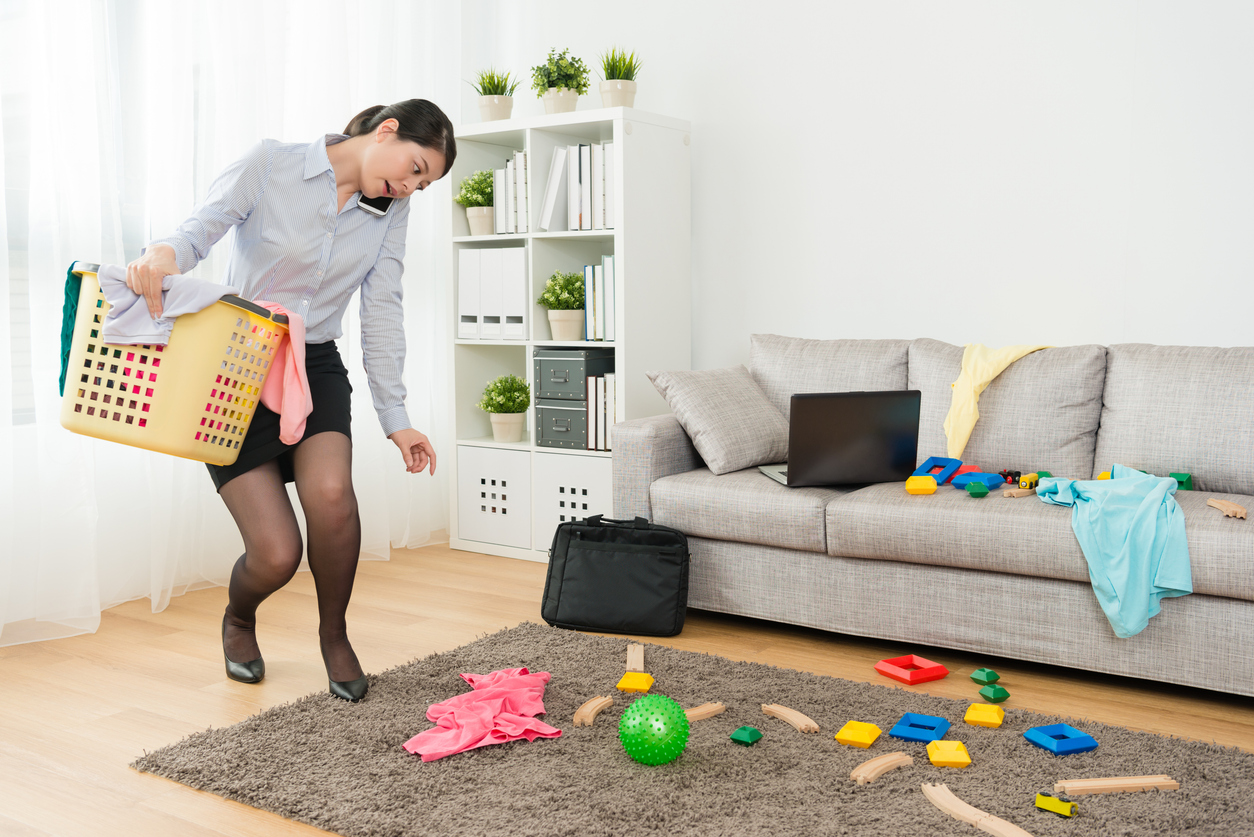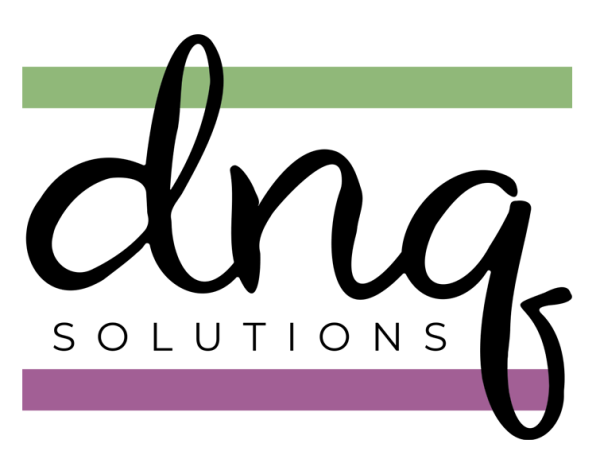
In the beginning of January, I asked you to think about your intentions for this year. What, at the end of the year, do you want to have accomplished. Then, I talked about breaking those over-arching intentions down into micro-goals. Assigning one micro-goal to each month of the year. After that, I talked about how all the best intentions in the world will not accomplish anything without corresponding actions. If your over-arching intention is to have better clutter control in your home, I am talking today about the way in which daily routines for clutter control can turn intentions into actions.
What is Clutter Control?
Clutter control is a physical, ongoing process that requires consistent effort. I know it’s not physically possible, but it sometimes feels as if clutter breeds clutter. It’s so easy to add something to a stack, just for now, instead of tending to the task. This is true for clothes, papers, errands to do, and other things which create clutter.
Thinking about, intending to do something about, the clutter does not control it. The only thing which controls clutter is action. Putting things away, returning them to their destination.
The Disconnect Between Intentions and Actions
I understand the disconnect between intentions and actions. It’s so easy for me to curl up on my couch with a magazine or a book by my side and think about doing something like fold the laundry, empty the dishwasher, or respond to email. I can think about something for lengthy periods of time and then run out of time to do it because I have an appointment.
Does this ever happen to you?
The Power of Daily Routines
Sticking to daily routines is what works for me and maybe it will for you, too. I have crafted a daily routine that I follow every morning. It’s a very rare day that I don’t take care of everything I include in my daily routine. In fact, I have two daily routines. One that I follow in the morning and one that I follow in the evening. These routines provide a structure for my mornings and evenings and make sure that clutter doesn’t have time to collect and grow.
Here are some daily routines for clutter control for you to consider:
- Take 5 minutes at the end of the day to declutter the family room
- Do dishes when you have finished a meal
- Put things back where you found them when you’re finished using them
- Wipe off kitchen counters after the evening meal and put things away
- Make your bed every morning before you leave for the day
Aligning Intentions with Routines
You know that the best way to conquer a large project like controlling clutter throughout your home is to do it a little bit at a time.
If your intention is to do a better job controlling clutter in your home, begin by creating a daily routine for a small specific area or room.
You may decide to break that down further by decluttering a section of a room like a closet.
Once you have the area the way you want it, think about the actions to take to keep it that way. From there you can craft a short daily routine for yourself. For instance, if your intention is to keep your closet tidy, a daily routine for clutter control may be to put your clothes away neatly.
One of the easiest things to do to help yourself is to pair a new routine with one you’re already using.
Here are some examples:
- emptying the dishwasher while you wait for your coffee to brew in the morning
- folding laundry while dinner is cooking
- talking to a friend while you tidy the family room
Another tip is to post your daily routine somewhere you will see it. Maybe print it, glue it onto brightly colored paper, and then display it prominently. You can also set alarms on your phone to remind you its time to follow your routine.
Conclusion
Clutter control becomes easier when your intentions are linked to actionable daily routines.
I say this all the time because it’s true in almost every situation. The clutter didn’t accumulate overnight so give yourself permission to tackle it in small bites. Maintain the area you declutter one small area at a time. Watch the decluttered spaces in your home grow.
Be consistent with your decluttering efforts – even if it is just 10 minutes at a time. You will be surprised at how much you can accomplish in 10 minutes.
Finally, create daily routines for clutter control that work with the way you want to live in your home.
Please reach out to me if you want help creating a daily routine for yourself. You can email me at dnqsolutions@gmail.com to schedule a free 30-minute phone consultation.
Diane N. Quintana is the owner of DNQ Solutions, LLC. She is an ADHD Organizing Specialist, a Hoarding Specialist, and a Chronic Disorganization Specialist. Diane is also an ICD Master Trainer, Certified Professional Organizer in Chronic Disorganization, Certified Professional Organizer and co-owner of Release Repurpose Reorganize LLC based in Atlanta, Georgia. She specializes in residential and home-office organizing.


I smiled at the comment “clutter doesn’t accumulate overnight”. I think some people must wake up in the morning and wonder where it all came from. Now if you have teenagers in your home, I have experienced the clutter fairy arriving at night and waking up to a messy. You are not talking about that phenomenon. Linking decluttering and organizing to another action is a good solution because you get twice the work done but it feels like you’re only doing one thing. I go for my morning walk and take the garbage out, I get dressed and make the bed, I eat breakfast and make my lunch.
I love the examples you provide, Julie, for linking tasks. Thank you for your comment!
The physics and biology of it aside, I think clutter DOES breed clutter. When you have a clear space, people often avoid “messing it up” by putting something down in that space. But if you have a kitchen sink that already has a few dishes, a desk that’s already piled with papers, or a reading chair or treadmill with clothes already strewn across it, it’s “no big thing” in some people’s minds to add more. If you have any clutter, it leads to the addition of clutter, even if not by biological means! But yeah, the clutter can’t control how it populates our space; only we can do that!
I couldn’t agree with you more about the way to battle this encroachment. I could not survive, professionally or personally, without my routines. I may allow clutter to build up through the day, particularly when I’m preparing for something big and atypical, but I make sure to have built-in check points, the biggest people before I head off to bed, to make sure that I awaken and return to clear and orderly spaces.
And yes, I pair one routine with another to help push along one I don’t love doing, but sometimes I pair the reward (which I’d normally give myself after completion) contemporaneous with the work. I hate emptying my dishwasher, but if I prop my phone up on the air fryer (trust me, it’s the perfect fit), I can watch/listen to TikTok or YouTube while getting everything put away.
I love your examples!
Julie, I agree – if it works to have the reward while you’re doing the task – why not.
You are right that clutter is an ongoing process, but for some people, it just isn’t important. Years ago I started the routine of carrying around a bin while I walked through my house early in the morning. I’d pick up anything that belonged elsewhere and as I walked around I’d drop off items when I got to where they belonged. That way I only focused on the clutter once a day and it only took a few minutes to set things straight. It was a good way to maintain the organization in my house.
Great tip, Janet! Once a day is usually all it takes – when you have a system.
It’s probably impossible to overstate the power of habits and routines. I don’t even think about the things I’m doing that are habitual. I think this is why they are so powerful.
It’s great to point out these specific examples of what people can do. We often need very specific ideas for how to get started. If you can get in the habit of clearing the kitchen counter every night, you give yourself a gift the following morning when you walk into an orderly space, ready to go.
A very few routines, exercises consistently, can make a huge improvement in a space! Here’s to a year where intentions become realities!
I’m a fan of cleaning a room, like a living room, playroom, etc… at the end of the day. It does help to keep the clutter at bay. Great post, Diane. Thanks for sharing your thoughts.
Routines are key to my success in controlling clutter. Adding new tasks to old routines help me move forward.
Thank you, Jonda – tacking new tasks to old routines is a great way to make it all work!
I like how you paired intentions with actions. Knowing what you want to accomplish (the intention) brings you to the next part (the action.) The intention won’t come to be unless action is taken.
I’ve noticed that intentions are rarely a challenge. It’s activation that can be the tricky part. People know what they want but aren’t always able or willing to take the action needed to get there.
Your suggestions for grouping new habits with established ones or designing routines for desired actions are great ideas. Having an accountability partner can also work well.
Yes! Accountability partners are a wonderful thing and also a good motivating force. Thank you, Linda.